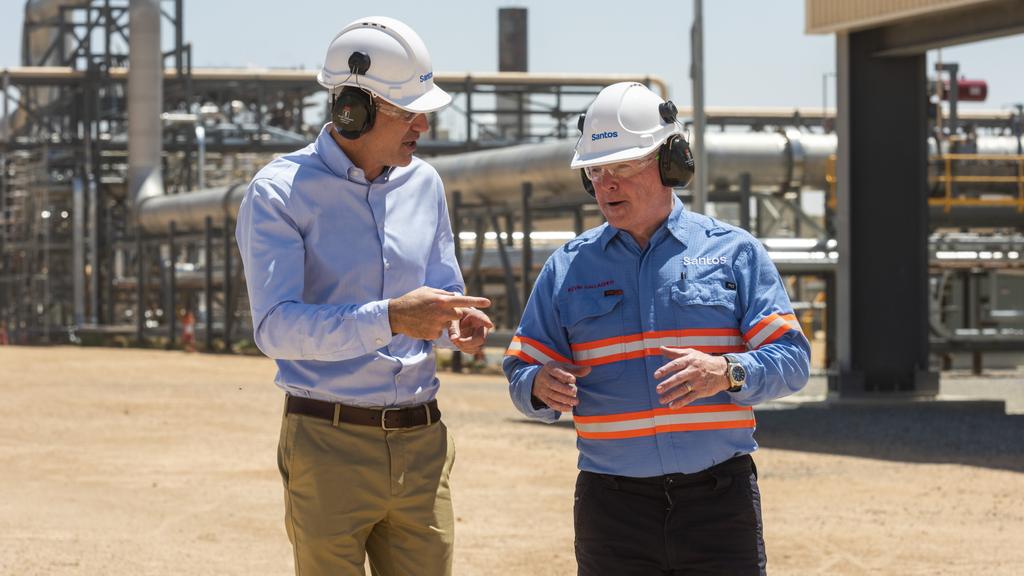
Article by Perry Williams, courtesy of The Australian
17.04.2025

Widespread flooding in South Australia has forced Santos to shut its upstream gas facilities in the state’s Cooper Basin, potentially curtailing supplies in the lead-up to winter.
The movement of floodwaters from Queensland to Lake Eyre meant Santos closed off some of its upstream or exploration and production facilities to protect equipment, with some activities to now be rescheduled.
Santos plans to adjust both its operations and activities to “optimise production” through the flood event, the company said in its quarterly production report.
A likely hit to production will be assessed once the floods peak with a return to full production to then start in the following weeks.
The Albanese government in March was forced to strike an emergency deal for gas volumes this winter after the competition regulator issued shock figures warning a shortfall of gas supplies for southern states had doubled from last year.
Santos has been frustrated by planning and environmental delays as it seeks to develop another major source of gas at Narrabri in NSW.
The Adelaide-based producer said on Thursday it was still awaiting a Native Title Tribunal determination for petroleum production lease applications. Broker RBC noted that was originally due by March 31, adding to ongoing hold-ups with the proposed project.
Santos chief executive Kevin Gallagher said in February Australian authorities should approve Narrabri if they are serious about averting a looming east coast gas shortfall and safeguarding domestic jobs.
The project could play a major role in easing Australia’s east coast gas shortfall, but it has attracted strong opposition and the federal government is wary of the political fallout.
Santos is seeking to tap some 1500 petajoules of gas reserves from the Narrabri project. Daily production of up to 200 terajoules has been predicted, accounting for about half of NSW’s current gas needs.
Broker Bernstein said Santos is on track to increase production by more than 30 per cent to reach 115-120 million barrels of oil equivalent by 2027, with its Barossa in the Northern Territory and Alaska’s Pikka developments remaining on track.
“Barossa is on track and an early start up of the Pikka project would be a positive although it depends on weather,” Bernstein said. “Free cash flow will remain low this year, but we should start to see this improve in 2026 (subject to oil price) as new projects come online and capex declines. For now, however, investors should remain on the sidelines given downside risks to commodity price.”
Santos has been under the spotlight in recent weeks after the Coalition said that if elected it would require east coast LNG exporters to withhold 10-20 per cent of domestic needs from uncontracted supplies.
Santos’ own LNG facility at Gladstone (GLNG) is entirely contracted so has no excess supplies that would be diverted under the Coalition’s policy. Industry figures insist GLNG has exacerbated the domestic supply issues.
Consultancy EnergyQuest said this week that Santos’ GLNG had emerged a likely winner from Coalition plans to flood the east coast market with gas that might otherwise have been exported.
“Santos’ win comes as other producers in the region criticised the initiative,” EnergyQuest said. “The Adelaide-based oil and gas producer stood apart from many of its peers in expressing support for the plan, which others warned would scare off investment, heighten sovereign risk, and lead to shortages down the track.”
Separately, oil and gas producer Woodside Energy signed a new deal on Thursday with Germany’s Uniper to supply 1 million tonnes per annum of liquefied natural gas from its Louisiana project and up to 1 million tonnes from its global portfolio.
Woodside chief executive Meg O’Neill said the agreements represent “another important milestone to move Louisiana LNG towards a final investment decision”.
The group last week announced it was roping in US group Stonepeak as a stakeholder in the Louisiana LNG development in the US.




